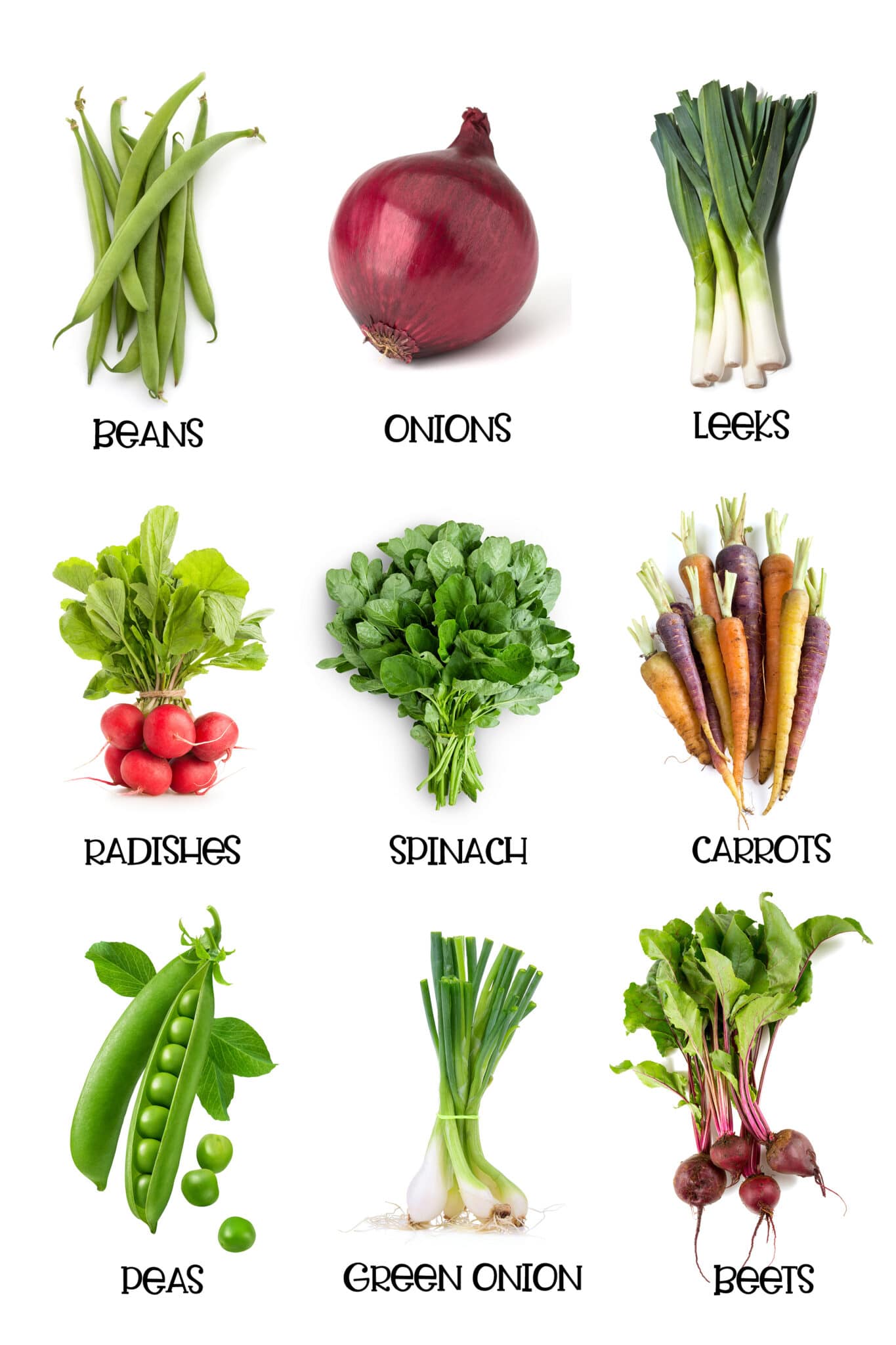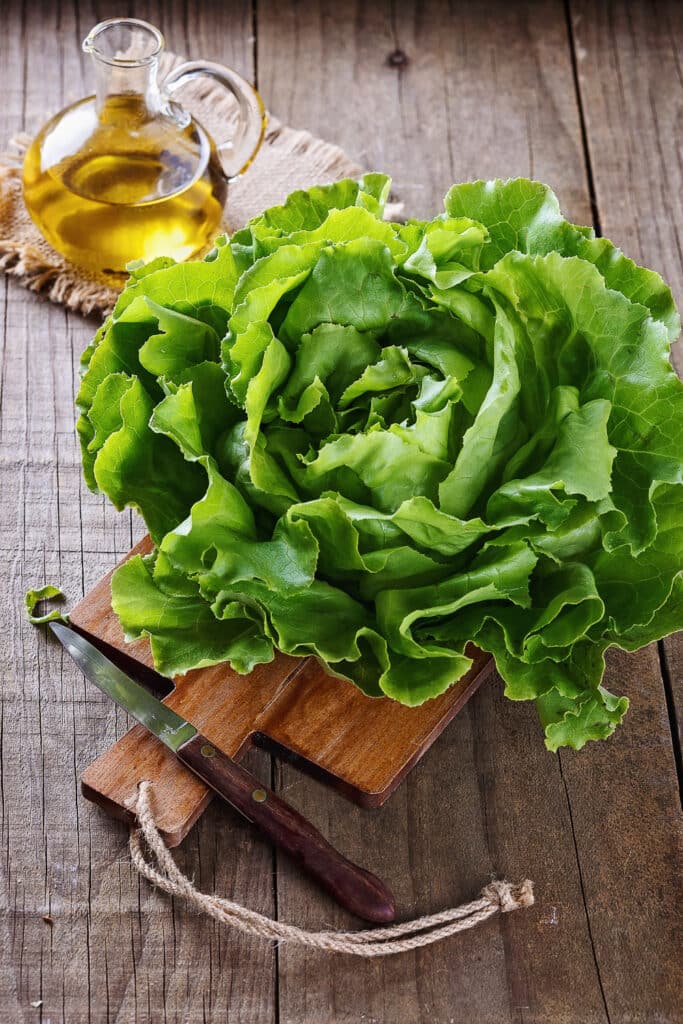The Best Sweet Potato Companion Plants
Sweet potato companion plants are a must for our vegetable beds. Over the years, we’ve found that harvests that include a few companions during the growing seasons are always heartier, healthier, and sweeter than if we just let our vines sprawl. So let’s get into it and look at what companion plants are must-haves and which plants you should avoid planting next to your sweet potato vines.

Sweet potatoes are a great long-term storage food source, so we plant them in our vegetable patch every year to help fill our cold room. However, you need more than a long growing season to get a bountiful harvest. A healthy growing season is crucial, and that’s where companion planting comes in handy.
Sweet potato Companion Plants in The Vegetable Garden
There are so many wonderful vegetables you can plant along with sweet potatoes that offer incredible benefits to help keep your sweet potatoes growing healthy and strong.
Legumes
Nitrogen-fixing plants like pole beans, green beans, peas, and bush beans make great companion plants for sweet potatoes. The plants can be trained to trail along with the sweet potato vines through the garden rows or beds.
You can also plant your sweet potatoes in front of a bean trellis and allow the vines to create a living mulch under the beans. Both plants will benefit significantly from this planting plan – the beans provide nitrogen for growth, and the vines keep the soil cool for the beans.

Spinach
Spinach acts as an effective ground cover that helps to prevent weeds. The bushy habit of spinach helps shade the ground around the sweet potatoes, keeping the soil cool and moist, which helps with soil moisture retention.
If you want big tubers at the end of the season, you must keep your sweet potatoes adequately watered, and having mulch will dramatically affect the evaporation of manually added water and rain accumulation.
Buckwheat
Buckwheat is an outstanding companion plant for sweet potatoes due to its rapid growth. It quickly provides a dense ground cover to suppress weeds, enhancing the garden’s cleanliness and reducing competition for resources.
Its ability to improve soil fertility is particularly valuable; buckwheat accumulates phosphorus from the soil and makes it available to sweet potatoes when it is turned into the soil as green manure. This process enriches the soil with organic matter, boosting soil structure and moisture retention.
Root vegetables
Root vegetables like radishes, carrots, potatoes, and beets make excellent additions to sweet potato beds. The plants enjoy the same growing environment and can grow side by side without negatively impacting the other.
Radishes can also act as a trap crop for flea beetles, which will help protect the vines.
Alliums
Alliums such as spring onions, scallions, leeks, onions, and green onions are good companion plants to sweet potatoes. They take up little or no space between rows and do not negatively impact the growth of the sweet potato tubers due to their small root systems.
Nasturtiums
Nasturtiums are among the best companion plants to interplant with sweet potatoes for several reasons.
The flowers look lovely, twining with the sweet potato vines along the ground. The flowers of Nasturtiums add a beautiful pop of color to the garden that helps to attract beneficial insects like bees.
Nasturtium and climbing nasturtium vines make a lovely ground cover, providing shade to the soil and helping to prevent moisture loss.

Marigolds
Marigold’s bright colors and abundant food sources attract bees and other beneficial insects to the garden. Those pollinators will help increase yields in your vegetable gardens, which makes them good companions for sweet potatoes.
The flowers also attract helpful insects like parasitic wasps and ladybugs.
Marigolds’ strong scents repel bugs and pests away, making them excellent companion plants. In addition, marigolds attract slugs and spider mites, making the flowers a good trap crop if planted away from your keeper crop.
Turning the flowers into the ground at the end of the season helps kill pests like root-knot nematodes.
See also: Marigold Companion Plants
Alyssum
Alyssum creates a dense ground cover that helps prevent weeds and moisten the soil.
The shallow roots of the alyssum plants also have no negative impact on the growth of the sweet potato tubers, making them a good companion plant.
The fragrant flowers attract beneficial insects like bees and parasitic wasps.
Plus, nothing smells as good as alyssum flowers in bloom!
Basil
Basil planted with sweet potato is said to improve the sweetness of the tubers. While in bloom, basil also attracts pollinators.
The lush, bushy growth of basil helps to shade the ground, which helps to prevent the evaporation of moisture.
Densely planted basil will also help prevent weeds.

Thyme
Thyme is a perennial herb that attracts hoverflies, which eat destructive aphids.
Like basil, thyme will improve the taste of the tubers.
Aromatic herbs
Herbs like dill, chives, borage, summer savory, and oregano make good companion plants for sweet potato vines. Plant these aromatic herbs nearby to ward off the destructive sweet potato weevil.
Herbs in bloom will also attract bees and other pollinators and helpful insects.
What not to plant next to sweet potatoes
Although sweet potatoes have many positive companions, a few plants are incompatible for various reasons – take a look at these plants and be sure to keep them out of your sweet potato beds.
Tomatoes
Tomatoes and potatoes planted near each other increase the chances of both plants contracting potato blight.
Sweet potatoes and tomatoes share many pests, like spider mites and aphids. Planting them together creates an environment where pest infestations can take over and destroy plants.

Squash
Squash, pumpkins, and gourds make poor companions for sweet potatoes because they compete for space and nutrients. This competition will negatively impact the growth of both vegetables.
Sunflowers
Sunflowers increase the chance of sweet potatoes contracting a fatal disease called potato blight when planted nearby.
Do you know sunflowers are allelopathic? They give off toxins (terpenes and various phenolic compounds) from roots, leaves, stems, flowers, and even seeds. The toxins will impede the growth of sweet potatoes.
Planting sunflowers far away from your sweet potato rows is best.
Expert Tips
- Integrate Flowers for Pest Control: Flowers like marigolds and nasturtiums are excellent companions for sweet potatoes. Marigolds can deter nematodes in the soil that might damage sweet potato roots. On the other hand, Nasturtiums can act as a trap crop for aphids and other pests, drawing them away from your sweet potatoes.
- Companion Planting with Herbs: Aromatic herbs such as dill, thyme, and oregano can help repel pests from sweet potatoes by masking their scent. These herbs can deter pests like sweet potato weevils and other insects, providing a natural form of pest control.
- Utilize Climbing Beans: Climbing beans can be a great companion for sweet potatoes. Beans also fix nitrogen in the soil, which can benefit the growth of sweet potatoes. However, ensure the beans do not overshadow the sweet potatoes, as sweet potatoes need full sun to thrive.
- Companion Plants for Ground Cover: Plants that provide ground cover, such as clover, can be planted with sweet potatoes. Clover can fix nitrogen in the soil and provide a living mulch, keeping the soil moist and cool. This can help sweet potatoes by improving soil fertility and moisture retention.
- Incorporate Leafy Greens: Planting leafy greens like spinach or Swiss chard around sweet potatoes can be beneficial. These plants do not compete heavily with sweet potatoes for nutrients or space and can be harvested before the sweet potatoes need more room to spread.
- Companion Planting for Soil Health: Including plants like buckwheat can also improve the soil structure and attract beneficial insects. Buckwheat grows quickly and can be cut down before planting sweet potatoes, leaving a natural mulch that enriches the soil as it decomposes.
FAQ
We like vining nastirums best as a companion for sweet potatoes. Nastirums will help with pest management, attract pollinators, help with moisture control, and add extraordinary beauty to your sweet potato patch.
Although the terms are used interchangeably in the US, yams and sweet potatoes are completely different vegetables.
Yams are starchier and usually not as sweet as the orange-fleshed sweet potato.
The exterior colors easily identify sweet potatoes. The skins can be rose or purple-colored. Yams, by comparison, have copper-tan skin with creamy white flesh.
Grab Our Ultimate PRINTABLE Garden Planner
With 39 pages of planning and organizing and the ability to customize your planner with the pages you need, you won’t need another planner for the rest of your gardening life!
$4.99 US

Final Remarks
There are numerous companion plants that are highly recommended for sweet potatoes. These companion plants can help your sweet potatoes thrive. One of the great things about companion plants is that you can choose what to plant next to your tubers based on your exact gardening needs, once you know what plants work and what benefits they bring.
Related Posts

Author: Laura Kennedy
Writer & Owner of Little Yellow Wheelbarrow
Editor’s note: This article was originally published February 3, 2022. It was updated February 11, 2024 for clarity and ease of use for the reader.










